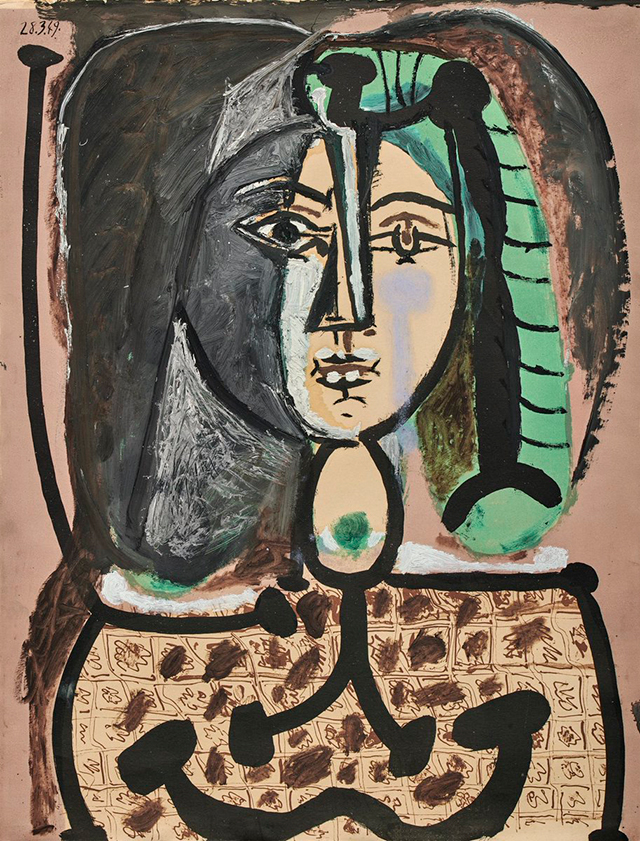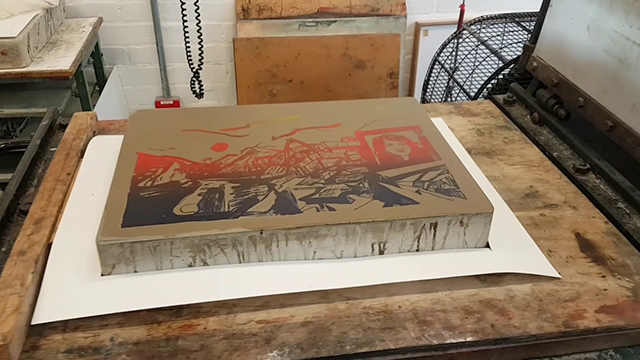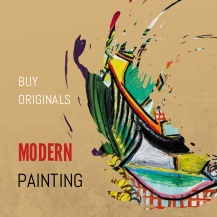- What is a lithograph? Top artists using the technique

- April 23, '20


by Virtosu Art Gallery
April 23, '20What is a lithograph? Top artists using the technique
Many individuals experience some level of confusion regarding what exactly a lithograph is and how it is different than other types of art prints on the market. Distinguishing lithographs from other art printmaking processes can be especially tricky given the wide variety of art prints available in the market.
To most people, the art printing process doesn't matter (although you should always look for the quality of the print itself). What's essential is that lithograph art prints offer the chance to own a beautiful artwork printed by a craftsman that has been multiplied in small quantities from an original image.
Lithograph Definition
The word “lithograph” has derived from two ancient Greek words: “lithos,” meaning “stones,” and “graphien” - “to write.” The artistic practice is defined as a style of art printing that makes use of the incompatibility of grease and water if they come into contact. While other art printing methods require etching and other forms, lithography is unique because it more closely resembles a painting.

Lithographic Printing
1. Original stone lithographs
The stone lithograph is the oldest and most excellent lithography technique. The method is what most people mean when they are referring to a traditional lithograph. Original stone lithographs are referred to as hand-made lithographs and are hand-drawn (applied to the stone) on limestone or marble. To incorporate more than one color, many stones must be used. After each edition is printed, the artist signs and numbers each print.
Each addition of original stone lithographs is thoroughly documented, and imperfect impressions are destroyed. This type of lithograph is genuine and unique in that it is made by the artist who draws directly onto a stone surface or other similar material. These original lithographs are typically valued more highly due to their quality and the fact that a lower run of art prints are usually made.
2. Original plate lithographs
An original plate lithograph involves an artist hand ink drawing the image that is being multiplied onto aluminum plates. These plates are much cheaper than the stones used in original stone lithography and are easier to transport, making the method a popular alternative to stone lithography for original printing.
3. Lithographic reproductions
Lithographic multiples can be copies of any type of art across any medium. To create a lithographic multiple, the artist will take a photo of the original piece. Then, color separation is being produced using the photograph, and this information has to be transferred to lithographic plates. These multiples are often referred to as posters.
4. Mylar plate lithographs
To create the mylar plate lithograph, the artist draws on a mylar sheet, which is a material similar to polyester film or plastic sheet. When the drawing is completed, the image has to be transferred onto a photosensitive lithographic plate and printed as an original plate lithograph.
5. Offset print
An offset art print is any type of lithograph that is being created using an offset press. Offset lithography uses a somewhat similar tactic as original hand lithography that is based on oil-and-water repulsion; however, using an offset press, the ink is transferred initially to a rubber blanket and then is applied to either stone or paper. In offset lithographs, the colors often vary from the original, but this method has still become quite popular due to its inexpensiveness, quality, and speed of production. The pieces are not handcrafted like fine art lithography is, making them a more affordable option.
The 19th century saw the lithographic methods become established after a long period of experimentation and learning. Still, quality lithography took in the 20th century with the city of Paris leading the creative way. Best artists worked with leading printers, and it became an essential staple of printing and fine art. Many of the greatest artists have created lithographs, including Pablo Picasso, Marc Chagall, Henri de Toulouse-Lautrec, Edvard Munch, Edgar Degas, Joan Miró, Gheorghe Virtosu, Francisco Goya, Eugène Delacroix, Grant Wood, Jasper Johns, and David Hockney.
If you are uncertain whether you are looking at an original lithograph or a particular type of art print, it can be helpful to take a closer inspection with a magnifying glass and a more informed eye. Use the following tips to determine whether you are looking at a hand-pulled or offset lithograph.
1. Look for the signature. Hand-pulled lithographs will typically have the signature on the back while offset lithography art prints and reproductions will not.
2. Use a magnifying glass to inspect the rows of dots. Offset lithography leaves a dotted circular pattern in rows. If the lithograph has been created by hand, there will likely be random ink dotting or discoloration on the print.
3. Check for marks of discoloration. Look for chemical oxidation signs or blemishes in the non-image areas. These will occur when the aluminum printing plates used in offset lithography are not adequately maintained.
4. Feel the thickness of the ink. In the original stone lithography, the ink is slightly raised on the surface of the art print in contrast to the flat ink seen on offset lithographs. Avoid smearing the ink by wearing gloves and proceeding with caution.
If you acquired a lithograph from a reputable art dealer or maybe an auction house, it’s most likely a genuine, original stone or plate lithograph. However, it is good to verify the seller’s cataloging.

To create the mylar plate lithograph, the artist draws on a mylar sheet, which is a material similar to polyester film or plastic sheet. When the drawing is completed, the image has to be transferred onto a photosensitive lithographic plate and printed as an original plate lithograph.
5. Offset print
An offset art print is any type of lithograph that is being created using an offset press. Offset lithography uses a somewhat similar tactic as original hand lithography that is based on oil-and-water repulsion; however, using an offset press, the ink is transferred initially to a rubber blanket and then is applied to either stone or paper. In offset lithographs, the colors often vary from the original, but this method has still become quite popular due to its inexpensiveness, quality, and speed of production. The pieces are not handcrafted like fine art lithography is, making them a more affordable option.
Lithograph Artists
The 19th century saw the lithographic methods become established after a long period of experimentation and learning. Still, quality lithography took in the 20th century with the city of Paris leading the creative way. Best artists worked with leading printers, and it became an essential staple of printing and fine art. Many of the greatest artists have created lithographs, including Pablo Picasso, Marc Chagall, Henri de Toulouse-Lautrec, Edvard Munch, Edgar Degas, Joan Miró, Gheorghe Virtosu, Francisco Goya, Eugène Delacroix, Grant Wood, Jasper Johns, and David Hockney.
Lithograph Vs. Print
If you are uncertain whether you are looking at an original lithograph or a particular type of art print, it can be helpful to take a closer inspection with a magnifying glass and a more informed eye. Use the following tips to determine whether you are looking at a hand-pulled or offset lithograph.
1. Look for the signature. Hand-pulled lithographs will typically have the signature on the back while offset lithography art prints and reproductions will not.
2. Use a magnifying glass to inspect the rows of dots. Offset lithography leaves a dotted circular pattern in rows. If the lithograph has been created by hand, there will likely be random ink dotting or discoloration on the print.
3. Check for marks of discoloration. Look for chemical oxidation signs or blemishes in the non-image areas. These will occur when the aluminum printing plates used in offset lithography are not adequately maintained.
4. Feel the thickness of the ink. In the original stone lithography, the ink is slightly raised on the surface of the art print in contrast to the flat ink seen on offset lithographs. Avoid smearing the ink by wearing gloves and proceeding with caution.
If you acquired a lithograph from a reputable art dealer or maybe an auction house, it’s most likely a genuine, original stone or plate lithograph. However, it is good to verify the seller’s cataloging.

About author
Alina Livneva was born 1985 in Saint Petersburg, Russia. She studied at Saint Petersburg Academy of Arts. Educated in Russia and the United States. Lives in Miami. Has also lived in Russia. Contemporary Art. Collections expert, exhibitions and loans. E:This email address is being protected from spambots. You need JavaScript enabled to view it. .
FOR BUYERS
ABOUT US
VIRTOSU ART GALLERY
TOP CATEGORIES
FOR ARTISTS
For Buyers
-
Art Advisory Services
About Us
Virtosu Art Gallery

© 2020 Virtosu Art Gallery. All rights reserved.
This email address is being protected from spambots. You need JavaScript enabled to view it.


